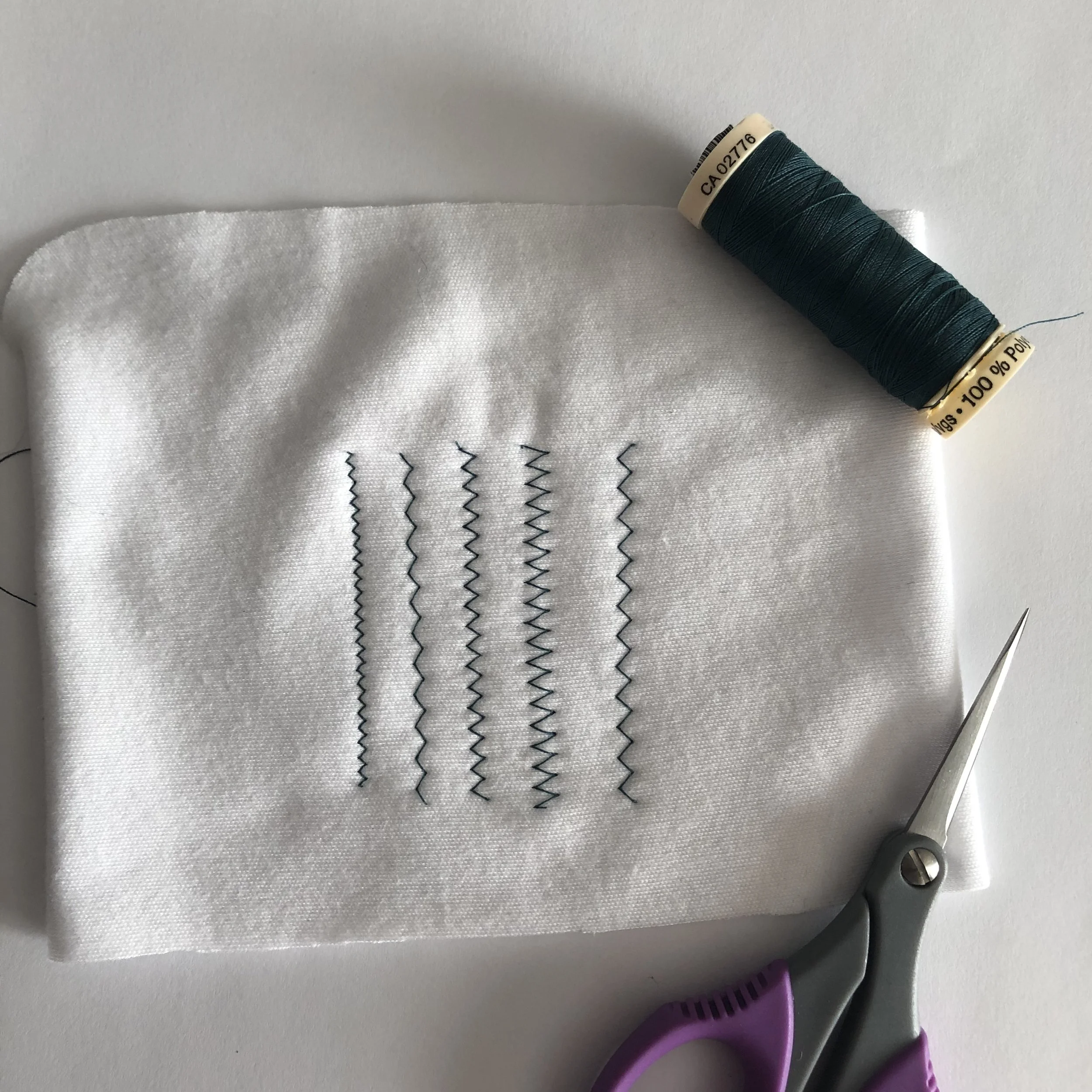Thursday Tip with Katherine - What makes a zig zag stretch?
So, what exactly makes a zig zag stitch work on knits and stretchy fabrics? It’s all in the design!
A zigzag stitch is formed by the machine stitching back and forth in a pattern that results in opposite diagonal lines. These are tacked in place at a set width from narrow to wide, and at a set length from short to long. If both the width and the length of the zigzag are equal it should create diagonal lines that would fit into a square. When they are inequal, the line would fit in a rectangle instead, as illustrated in the photo below which shows the square and rectangle drawn around the stitch.
Here are a few zig zags to show you how different settings work.
From left to right: Width (W) 1.5, Length (L) 1.5; W2, L3; W3, L2; W5, L2; W3, L 3
The shape of the zigzag allows the fabric to be stretched without breaking the stitch because the hills and valleys of the stitch even out into plains. Just like if the Rocky Mountains were to be smushed flat they would occupy much more land space than they do now. Or if you make a tower of playdoh and then squish it, it moves out to the sides under your hand, just like a zigzag stitch becomes flatter when you pull on it.


